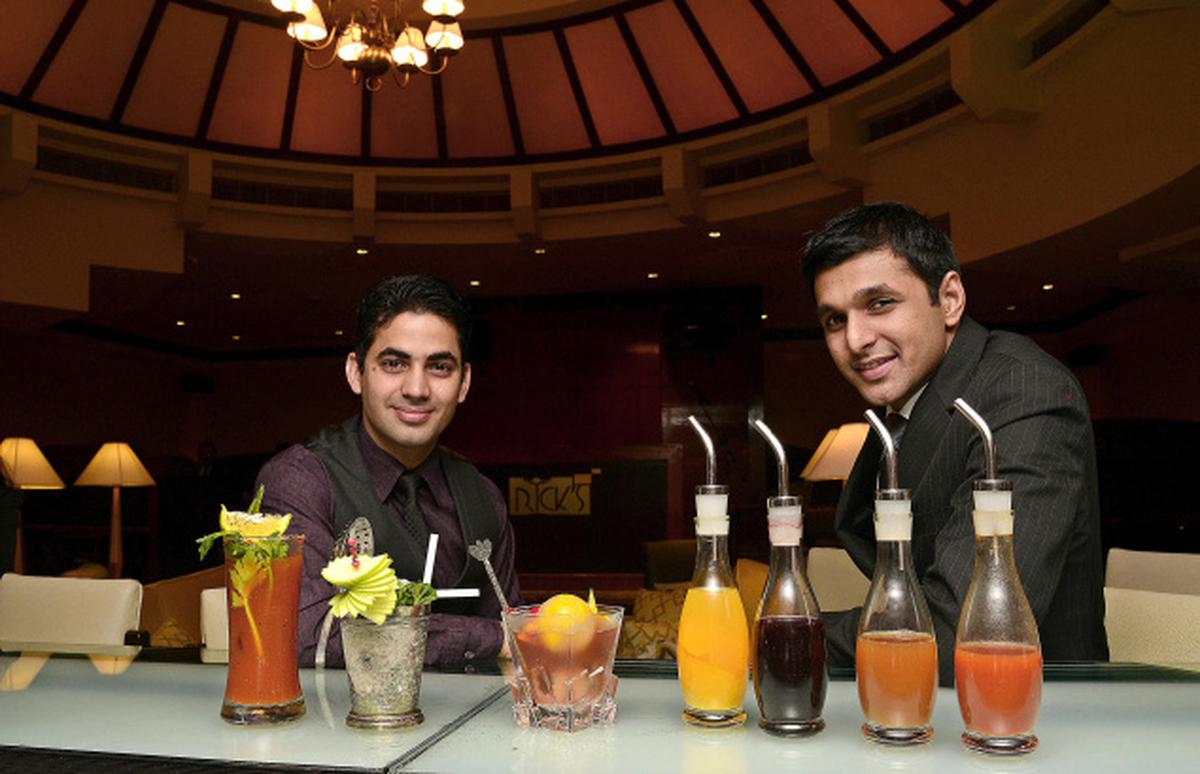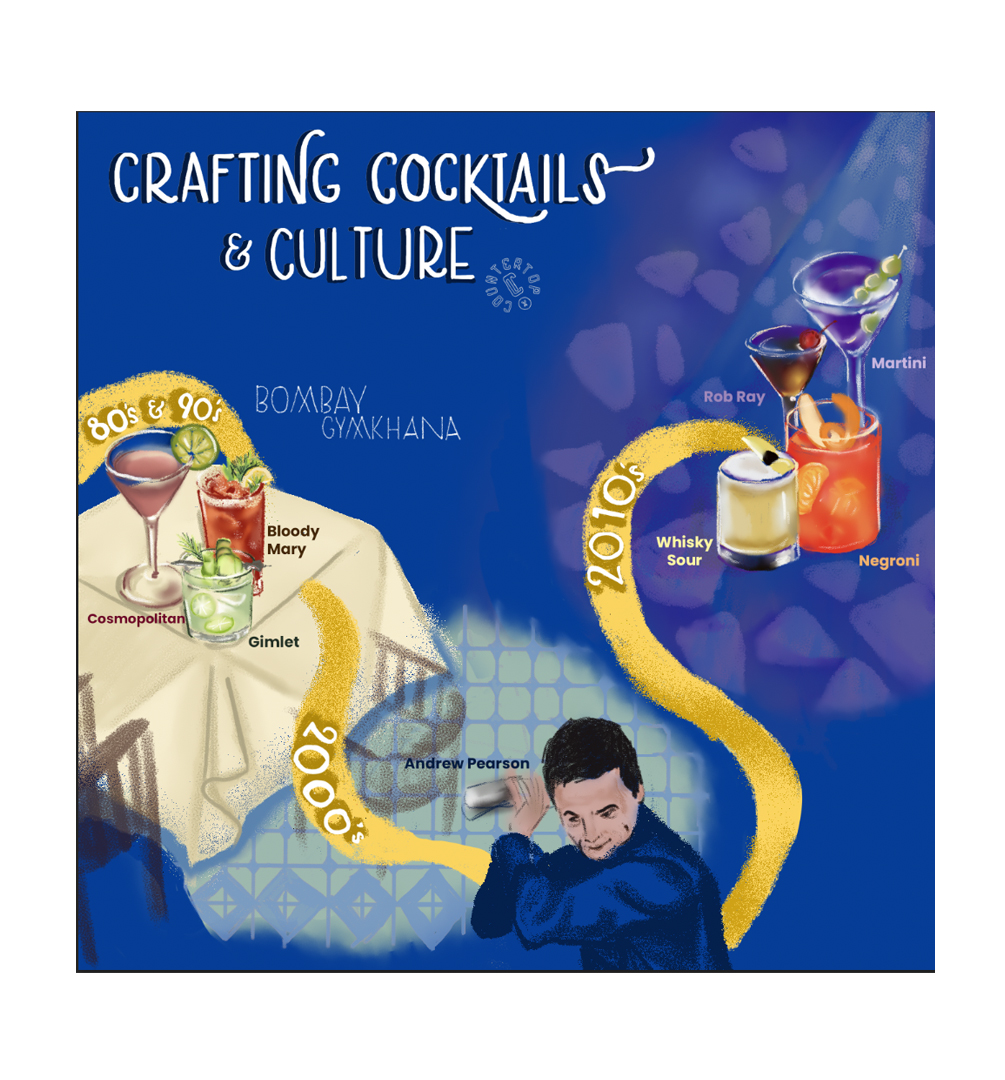Pankaj Balachandran, also famously known as @isaynegroni on Instagram, richly details the history and evolution of India’s cocktail bar scene.
We have come a long, long way from our humble beginnings in the world of cocktail bars, bartenders, cocktails, and programs. And at an unprecedented pace at that. Without a fragment of doubt, it’s easy to say that India’s bar scene in recent years has undergone a remarkable transformation. Let me take you on a journey through time to understand the twists and turns that have shaped India’s modern-day bar culture.
In the early 1980s and 1990s, even though bars existed, they were in three distinct spaces:
- We had gymkhanas, which were big membership-driven drinking venues.
- We had ‘permit rooms’, primarily seen as everyone’s everyday watering hole to enjoy a drink or two.
- And then we had elegant hotels sprung up across the country which had a dedicated bar.
I am pretty sure I’m missing a fourth category – iconic places like Black Cadillac in Bangalore; Leopold, Toto’s Garage, and Churchill in Mumbai; Rodeo in Delhi, and many more. But let’s keep that for another bar history article.
Cocktail culture in India did thrive to some degree in bars confined to luxury hotel premises, frequented by expatriates and select individuals. It was much like how the rest of the world behaved in the early years of cocktails. Globalisation opened India up to international spirits, liquors, and mixers, and soon there was access to liquids beyond a select few popular brands.
When it came to excellent cocktail culture, hotel bars ruled the roost for two decades from 1990 to 2010. We had our own versions of The Connaught Bar and of the Savoy right here in India through The Harbour Bar at Taj Mahal Mumbai, The 1911 in Imperial, Patiala Peg, The Polo Lounge, The Golf Bar, Djinns, and many more. If you look at the movers and shakers of the bar world today, most of them would trace their lineage to these iconic venues. The drinks during that era were the classics, the sweet and snazzy ones. Cosmopolitans, gimlets, Bloody Marys, caipiroskas, and so on.
India’s nightclub era / the disco era arrived here a little later than the West. A noteworthy entrant at the time would be TGIF, which not only popularised frozen margaritas and flavoured daiquiris, but also brought here with them international bar training modules. This was the start of cocktails being consumed in fair quantities outside of hotels. TGIF’s pitchers of frozen drinks, duly adorned with fresh fruits were a thing.
The early 2000s saw some of these elegant hotel bars swimming with the current, and shifting their bar business models into nightclubs. It was simply better for top lines. Many hotels started housing nightclub venues at their premises, over and above their sophisticated conversational bars.
The best known among these included Insomnia, Gungroo, Oasis, Enigma, Incognito, Agni, Tantra Ice Bar, No1, and LAP. Some hotels had a hybrid model. These were high-energy venues where punters could go out for a great cocktail alongside great music – The Rick’s at the Taj Mansingh (also my alma mater), Blue Bar, Ice Bar, Sky Bar, and a few others. Alongside, another change was occurring in Bangalore leading to the city’s vibrant pub culture. With the rise of microbreweries and the establishment of IT parks, Bangalore was filled with youth who didn’t mind a beer or two after work.

Right before the turn of the decade, there was a change. Nightclubs began shutting down, making way for some fine restaurant establishments which also housed dedicated bars. Prime examples of these were China Kitchen in Delhi, Wasabi in Mumbai, and Blue Ginger in Delhi and Bangalore. Several extraordinary multifaceted venues like SET’Z also opened during that time.
A key catalyst in this evolution of India’s cocktail scene was the emergence of a youthful, cosmopolitan demographic eager to embrace the trappings of Western urban lifestyles. With greater disposable incomes and exposure to international trends through media and travel, young Indians developed a taste for sophistication, and the desire to socialise beyond traditional norms.
Another significant development that unfolded across the country during that time was the influx of international bartenders to Indian hotel bars. These bartenders – many of whom are now heavyweights in the global bar and beverage industry – spent considerable time behind the stick in India. Remarkably, we had the likes of Andrew Pearson, Giancarlo Mancino, Tim Judge, Dimitri Lezinska, Maxime, and more gracing bars in India, courtesy of renowned international brands. Many bartenders considered legends on the scene today made their initial mark in India in the early 2010s, including Salvatore, Gaz Regan, Douglas Ankrah, Peter Dorelli, Dale DeGroff, Colin, and Ian Burrell. They exposed India and its bartenders to what was happening outside of the country. Their masterclasses, cocktail sessions, and training were crucial. For this, we have to thank international liquor brands.
In my opinion – and not just because I was fortunate to work here – Rick’s at The Taj Mahal Hotel in Delhi played a significant role in laying the building blocks of cocktail culture in India. Rick’s made cocktails cool, nurtured some of the top brass of the industry, brought in expat bartenders for training and sessions, engaged heavily with consumers through initiatives like the ever-popular Rick’s Cocktail Competition. They not only carried out these initiatives, they also spoke about them. Thanks to the significant influence they had on the market as part of IHCL, they made sure their message reached far and wide through good media coverage. People knew that if they wanted a good cocktail, Rick’s was a safe bet. That’s some good old marketing and PR right there.

Umami Ugarte at Rick’s
For the bar program at Rick’s, the concept was heavily depended on the movie Casa Blanca. The central character was Rick Blain, who is the owner of the American cafe Rick’s. The drinks are inspired by scenes and people from the movie.
Soon enough, a few popular bartenders got sold on the idea that bars could exist outside of hotels. Yangdup Lama of Cocktails & Dreams and Sidecar, a bar legend and veteran, fondly remembers that his early ideas and business plans to set up interesting bars outside hotels were made way back in 2006. Vikram Achanta, Lama, and Minakshi, the founders of Cocktails & Dreams, put a detailed pitch for a cocktail bar along with its projections and financials.

In 2010, the trend turned and gave way to independent cocktail bars. I would credit this change to three iconic venues. Ellipsis in Mumbai set up under the expertise of Death and Co. NYC was the first to open its doors. It served stunning drinks, and housed iconic bartenders including Devender Sehgal.
PCO was founded by Rakshay Dhariwal, a place that was inspired by his life in the States where he frequented many speakeasy bars. He roped in Vaibhav Singh and Arijit Bose. Lama and Minakshi opened Cocktails and Dreams Speakeasy, the first of its kind, a bartenders’ bar, in early 2012.
Cocktails consumed during this era were very American-inspired. We had The Old Fashioned, whisky sours, negronis, martinis, Rob Roys – all of which were becoming evidently very popular. Imbibers were exposed to classics that went beyond the previous sweet and sour ones.
All these bars were striving to expose larger audiences to the cocktails. They started with familiar classics and added a few twists, upgrades, and more modern classics. You can’t run without walking – these bars gradually helped the Indian audience understand the world of cocktails and mixology.
In 2013, I had just taken charge as the bar manager at the iconic Rick’s, and I would frequent these new bars, learning from their bartenders, and being mentored by them. Varun Sharma and I were busy doing barrel-aged cocktails, shrubs, and vinegars, and offering a signature serve list thanks to constant R&D, way back in 2013.

Other bars that pushed the cocktail bar culture forward during this time were Shroom and Smoke House Deli, both in Delhi. Shroom focussed on molecular drinks and SHD featured some great fresh fruit-based drinks. Ek Bar, which was set up by AD Singh with Nitin Tewari, was the first Indian bar with a menu that could tell a story. Several Indian bartenders were also travelling abroad and working in different cocktail capitals across the globe.
Bars were finally getting the spotlight they deserved in India, recognition that was long overdue. For the first time, the spotlight was shining bright on the people behind the stick.
India’s bar industry and our cocktail culture sped up in its evolution after 2015. We got beverage programs, gorgeous glassware, clear carved ice, concept menus, clarified drinks, and many more experiences that we might take for granted today. To read the second part of Pankaj’s story, click here.

